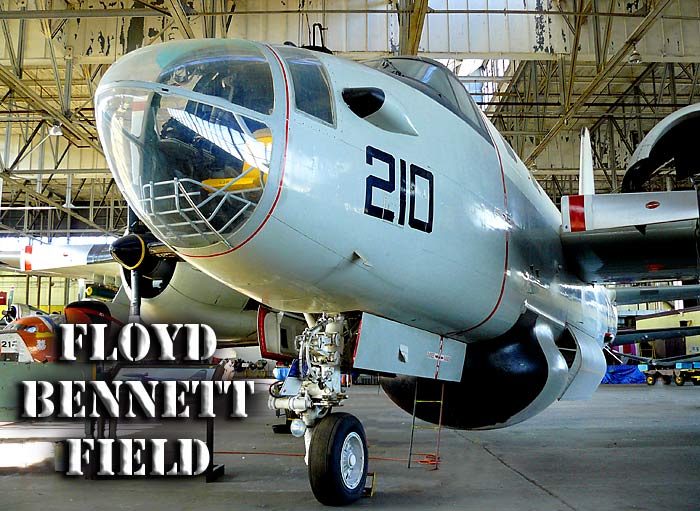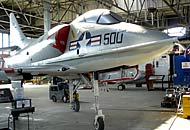 |
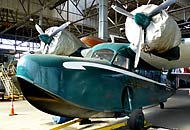 |
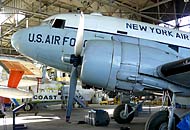 |
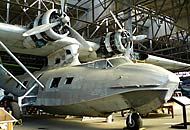 |
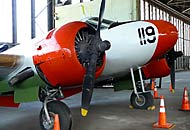 |
Floyd Bennett Field - HARPFloyd Bennett Field is the home of the Historical Aircraft Restoration Project, or HARP, an aviation museum located in Brooklyn, New York. Floyd Bennett Field's Historical Aircraft Restoration Project is staffed and operated by US National Park Volunteers. The airfield and former Naval Air Station is now a part of the National Park Service's Gateway Recreation Area in Brooklyn. HARP's goal is to locate and restore historic aircraft, most with some sort of connection to Floyd Bennett Field as a former Naval Air Station. Their most popular aircraft at the moment is their PBY Catalina, which was donated by the United States Marine Corps in return for restoring and displaying the historic amphibian. You can see how the volunteers have been working hard cleaning and treating corrosion on the airframe and replacing panels that were too far gone for treatment. You'll probably never see another where you can see the internal framework of the wings and wing mount pylons (until they finish it, that is). I can't wait to see it when it's completed. A C-47 Skytrain in New York Air National Guard livery was getting new ailerons and tail control surfaces. What I especially liked about the C-47 was if there is a volunteer on hand who's connected to that aircraft, if they are free they'll take you on board and you can get a good look inside and into the cockpit, which looks very complete. The Grumman Goose looks fantastic in its New York Police livery, and I was told is actually airworthy and is flown at air shows. HARP's Goose is a wonderful restoration. Another Grumman amphibian, an Albatross in US Coast Guard colors was also on hand and undergoing extensive corrosion treatment on the hull in preparation for paint and restoration. A Fairchild PT-26 trainer looked terrific with fresh covering and paint. The Beech C-45 Expeditor was in the process of getting a fresh paint job in Marine Corps colors. From the oil drips I saw, this C-45 if not airworthy has at least had its engines running. The A-4 Skyhawk was done up in Marine Corps markings and looked brand spanking new. The Sikorsky HH-3F Pelican Helicopter has been restored to a very high standard on the outside and you could walk right in via the aft loading ramp. I think my personal favorite was the Lockheed P2V-5 Neptune Patrol Bomber, which volunteer Bob Weiss was kind enough to get me inside. To get in there are no stairs, only ladders and it is very tight inside. So tight that you need to get on your knees to crawl to the nose section and also to get over the wing hump in the fuselage to access the rear compartments. Missions must have been incredibly loud with the Wright R-3350s driving wide constant speed props directly in line with the flight deck, and very tiring as the Neptune could stay in the air 22 hours without refueling. The paint looks fresh and the US Navy markings were applied with a good deal of care. In the museum's workshop the crew were busy fabricating the fuselage of a copy of Wiley Post's Lockheed 5B Vega, the Winnie Mae. I would have liked to have gotten a closer look but since getting a bad case of epoxy poisoning from working with the stuff on wooden canoes indoors without a respirator, I couldn't get anywhere near it. I did have a look at the wings which were outside the shop under tarps and their workmanship was first class. Speaking of Lockheed Vegas, there was a copy of a Lockheed Vega in the hangar that had been heavily damaged. The Lockheed Vega replica was built in Mexico for $60,000 and mounted on a pylon close to the road as and advertisement for Floyd Bennett Field and the park. It had been knocked off in a wind storm suffered a great deal of damage to the wings and fuselage. HARP also had a couple of other gems, a Dodge WC-27 WWII Ambulance, and a Kaiser Jeep M724 Welder. Both looked great but I thought the old Dodge was especially cool. The volunteer crew at Floyd Bennett Field restored both vehicles, and that's no small feat knowing the level of abuse these vehicles suffered in service, and the amount of corrosion they developed over the years. The museum's aircraft are located in Hangar B at the former Naval Air Station Floyd Bennett Field in Brooklyn, New York. There is no food on site, but there are fast food restaurants about a mile and change up Flatbush Avenue to the north. Parking was free and close to the museum, and the museum floor is on the same level as the parking lot so it is fairly handicap accessible. I think there may have been a small threshold to cross at the door and as I was visiting in the middle of winter they only had a portosan for a restroom as the water had been turned off. The airfield is right off Flatbush Avenue near the Belt Parkway. Coming from the Belt Parkway you will see the airfield on the left but seemingly no way to turn left. You must go almost to the toll both before the next bridge to be able to make that left into the airfield. It is NOT the hangar you see near the fence on Flatbush Avenue. Once you pass the entrance gate you make the first left, drive down a main runway for a few hundred feet, then turn right and continue down that runway to the end. The hangar is ahead of you on the right, and also houses the Historic Aircraft Preservation Association year round so there are always aircraft to see whatever time of year you go. Admission was free, but donations are accepted and more than welcome. 9/27/2009 - Media Flash! PBS (Channel 13 in the NYC area) aired the half hour show "City of Parks" which includes a segment on Floyd Bennett Field and HARP. P2V Neptune Veteran Bob Weiss was interviewed, along with Tony Ellen and Dante Demille. PBS has City of Parks online with the Floyd Bennett Field segment. Click on Chapter 4 to go directly to the HARP segment. Visit the Historic Aircraft Restoration Project's Website for updates and information on exhibits. Visit Floyd Bennett Field's Website for park and museum hours and more information on other park facilities and activities. If you are local to the the New York Tri State area near Floyd Bennett Field, pay these guys a visit. Or better yet, offer to volunteer. They're a good bunch of guys and you'll be doing something positive in preserving and restoring some very historic military aircraft. Floyd Bennett Field is also the home to the Berlin Airlift Historical Foundation and their aircraft, so there are even more airplanes to see during your visit. |
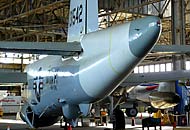 |
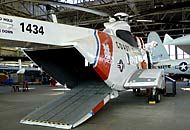 |
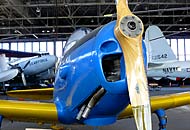 |
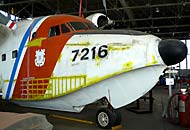 |
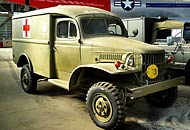 |
